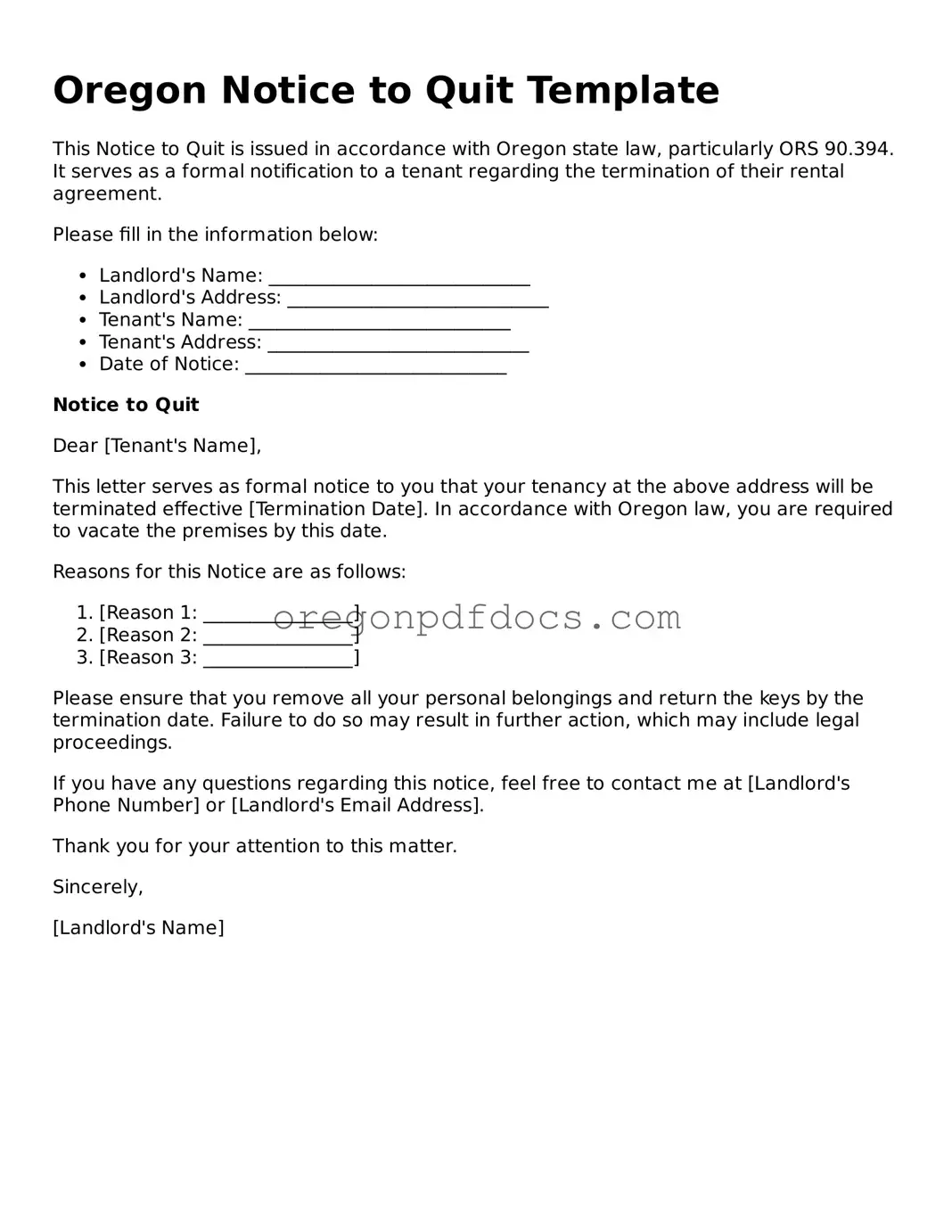Oregon Notice to Quit Template
This Notice to Quit is issued in accordance with Oregon state law, particularly ORS 90.394. It serves as a formal notification to a tenant regarding the termination of their rental agreement.
Please fill in the information below:
- Landlord's Name: ____________________________
- Landlord's Address: ____________________________
- Tenant's Name: ____________________________
- Tenant's Address: ____________________________
- Date of Notice: ____________________________
Notice to Quit
Dear [Tenant's Name],
This letter serves as formal notice to you that your tenancy at the above address will be terminated effective [Termination Date]. In accordance with Oregon law, you are required to vacate the premises by this date.
Reasons for this Notice are as follows:
- [Reason 1: ________________]
- [Reason 2: ________________]
- [Reason 3: ________________]
Please ensure that you remove all your personal belongings and return the keys by the termination date. Failure to do so may result in further action, which may include legal proceedings.
If you have any questions regarding this notice, feel free to contact me at [Landlord's Phone Number] or [Landlord's Email Address].
Thank you for your attention to this matter.
Sincerely,
[Landlord's Name]
